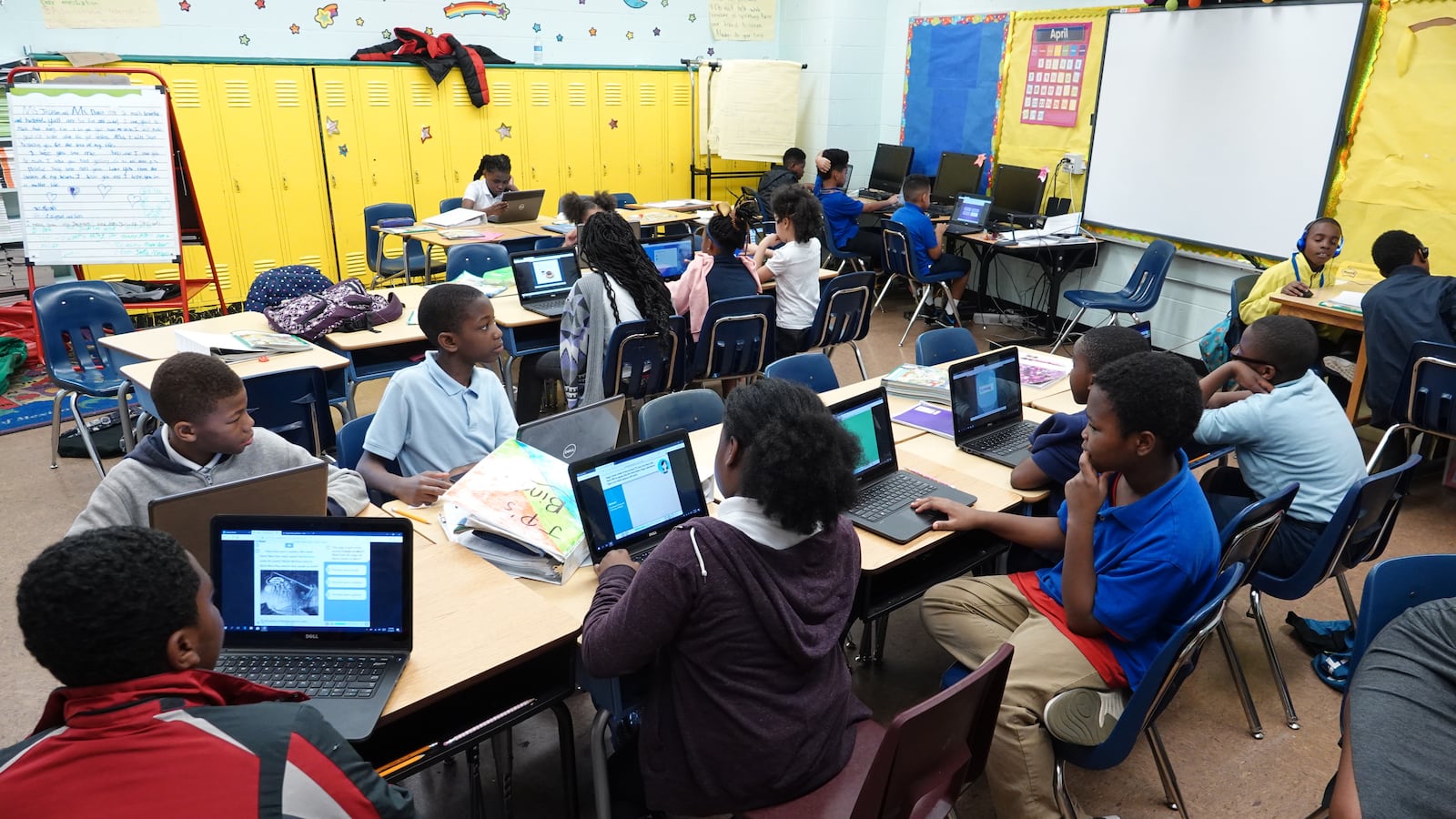Calling it an investment in the future, Shelby County Schools’ leaders asked county commissioners Wednesday for $7.5 million over their $1.04 billion operating budget. The financial boost, they said, would be used to add early literacy programs, double down on academic efforts when students are out on break, and strengthen coding and computer science programs.
“We need a commitment from you and an investment in the children of Shelby County Schools,” Superintendent Joris Ray implored commissioners in his first budget hearing as the district’s new leader.
The school board had approved the billion-dollar operating budget the night before and reduced their initial request from an extra $10 million to $7.5 million. The reduction was possible after the district reworked the budget to cover the $2.5 million additional funding for pre-K, Ray said.
Some commissioners voiced support for the school spending plan, although one said he couldn’t approve the additional dollars. Commissioners did not vote on the school district’s funding request at Wednesday’s budget hearing. The 13-member commission must approve the budget for the new fiscal year which begins July 1.
The district’s proposed operating budget is about 1% less than last year’s budget. That includes a 2.5% pay raise for teachers, a 2% raise for other school staff, and $10 million drawn from district reserves. For capital needs, district leaders are requesting about $64 million — about 30% less than the $90 million they received last year.
Half of the district’s funding comes from the state and the other half comes from county government, said deputy superintendent Lin Johnson.
For the past two years, the commissioners have approved the district’s funding requests. Historically, though, meetings between the school district and commission, the funding body for all public school districts in the county, have been contentious affairs. But Wednesday’s meeting between the two was cordial as commissioners expressed support for the district.
“I want to go on record that I support this request. I think it’s reasonable,” said commission chairman Van Turner.
Commissioner Tami Sawyer agreed, adding: “We are consistently funding jails and new buildings and intervention programs, but before we get to all the money we spend on convictions, we need to put more money in the first part, which is education.”
But while Commissioner Reginald Milton praised the efforts of the district, he said he couldn’t support the extra funding request. “The reality is that the real challenge is not the fact that these people aren’t doing their jobs, but we’re giving them tasks that are beyond their scope,” he said, explaining that schools are being asked to address nutrition concerns, mental health issues, childcare and other things beyond education.
“Sometimes we have to say no to you because you’re not going to solve these problems,” Milton said. “None of you can say that I have ever said no to you when you have come before this body. On the $7.5 million? No. I think our budgets are tight and we need to be looking in another direction. We need to be looking outside of you because you can’t solve all these problems.”
What’s already in the budget:
- Funding for a continuous improvement zone to help sustain turnaround efforts.
- Funding for a total of 600 pre-K seats in 30 classrooms.
- Funding for all high schools to offer ACT prep classes and at least two Advanced Placement courses for college credit.
- Additional educational assistants for second grade at low-performing schools.
- Screening all first graders for the district’s gifted program, called CLUE.
- Funding for Project Stand, a program for students coming out of juvenile. detention.
- Investments in 30 reconnection specialists to staff “reset rooms” as part of a restorative justice initiative in middle and high schools.
- Translated materials so parents are aware and have access to school and student information.
What the extra $7.5 million request would add:
- $2 million for universal phonics curriculum for K-2.
- $2 million for academic reinforcement for students during fall and spring breaks, specifically reading and math and ACT prep for high schoolers students.
- $1 million for project-based learning focusing on coding and computer science.
- $900,000 for instruction and additional teachers for English language learners.
- $600,000 for freshmen academies, which focus on improving attendance and lowering drop-out, to be added to all high schools.
- $750,000 for middle school enrichment programs in language arts and math for high-performing students.
- $300,000 for ACT prep.

